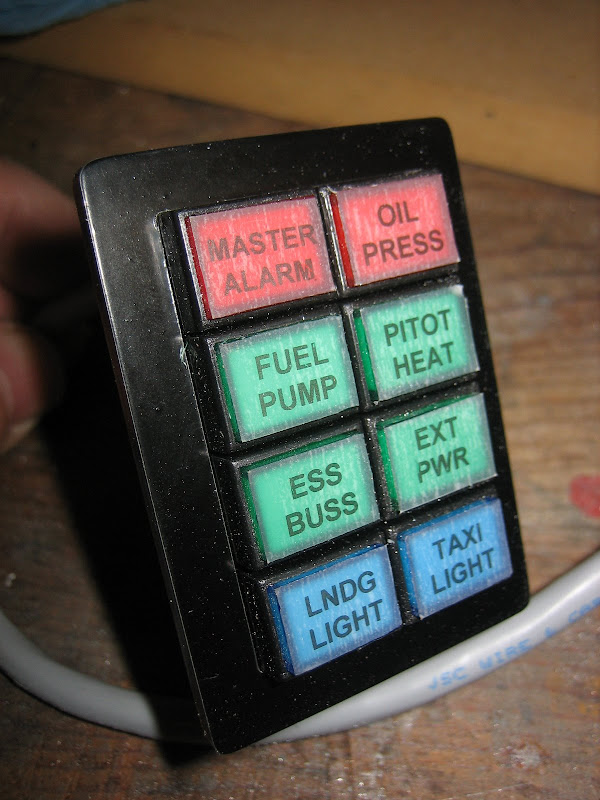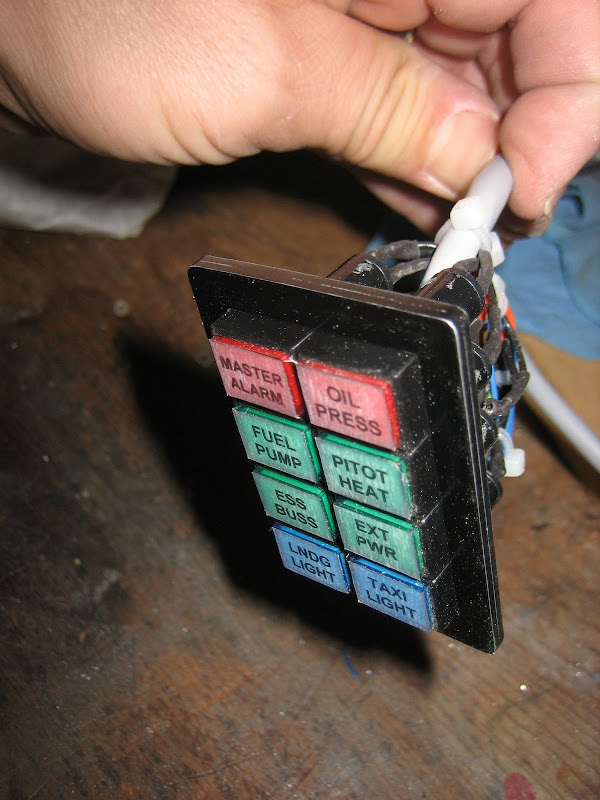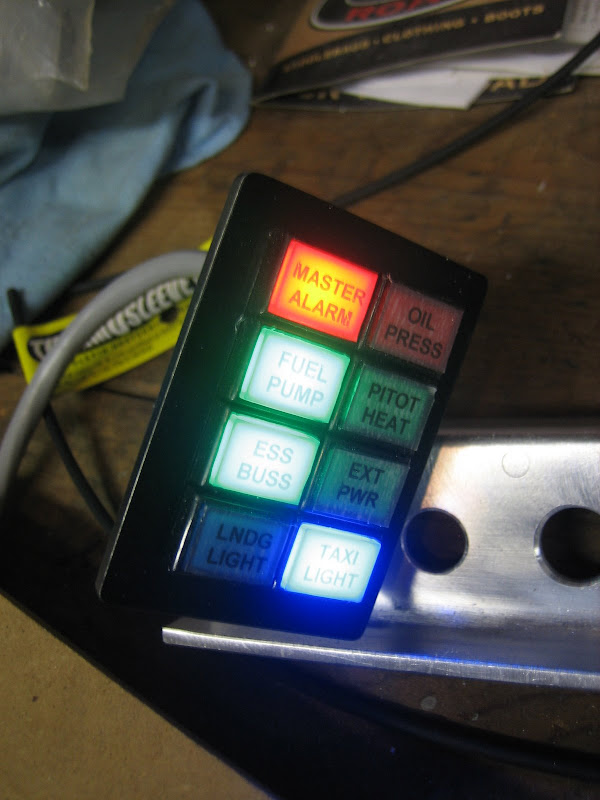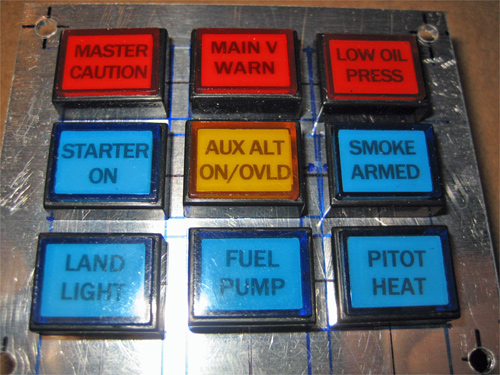In working on some future design ideas, I decided to try and "repackage" the annunciator panel that I originally built for the Val - the one that fits up above my GRT EFIS stack.When I built it originally, I used discrete LED's, soldered in dropping resistors, and built the case from raw "U"-Channel stock.
After finding some nice 12 volt LED indicator lamps, and using them for a single-row annunciator panel in "Mikey" (Louise's RV-6) I decided to try and build a multi-row unit for something I have in the works. Since my original one was built to connect to the airframe through a nine-pin D-Sub connector, it was easy to build a drop-in replacement (all I had to do was dig through my stack of building notes to find the original pin-outs....)
Here are some pics to give people ideas of how to do their own - as they say, picture is worth a thousand words! (it is just an aluminum bezel, the lights, and some wiring - cost was almost nothing)



Paul
After finding some nice 12 volt LED indicator lamps, and using them for a single-row annunciator panel in "Mikey" (Louise's RV-6) I decided to try and build a multi-row unit for something I have in the works. Since my original one was built to connect to the airframe through a nine-pin D-Sub connector, it was easy to build a drop-in replacement (all I had to do was dig through my stack of building notes to find the original pin-outs....)
Here are some pics to give people ideas of how to do their own - as they say, picture is worth a thousand words! (it is just an aluminum bezel, the lights, and some wiring - cost was almost nothing)



Paul
Last edited:





